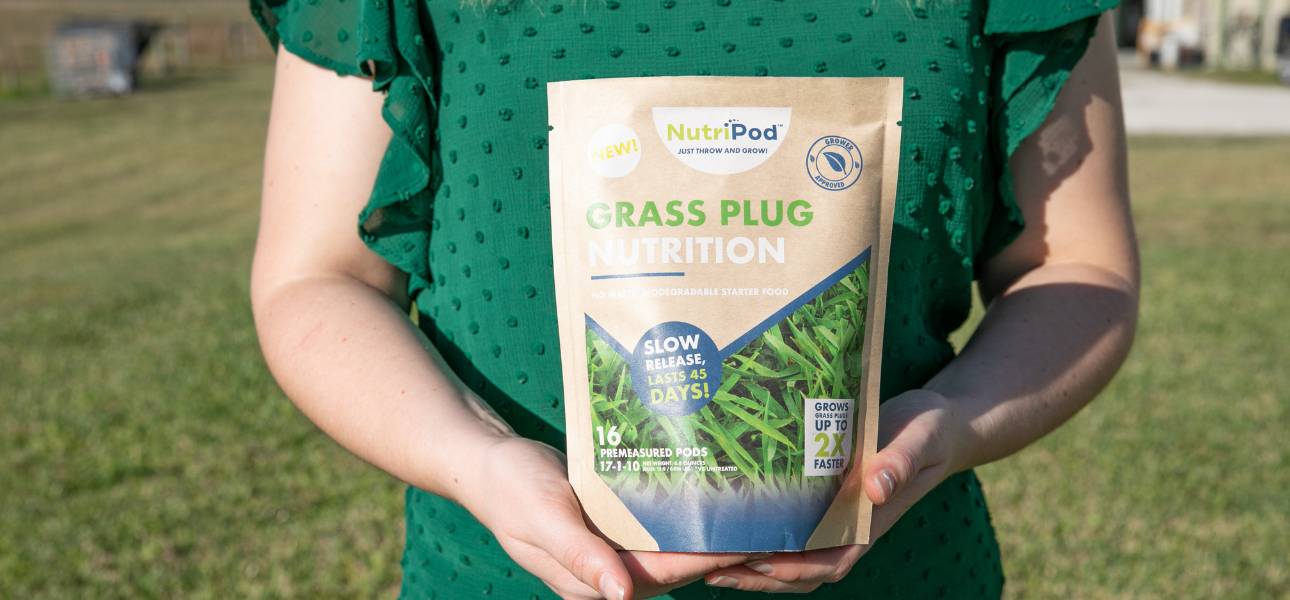Winter-Stressed Lawn: Steps for a Healthy Spring Recovery

Winter can take a toll on your lawn. In northern climates, grass enters dormancy under snow and frost, but in Florida, where snow is rare, warm-season grasses like St. Augustine, Bermuda, and Zoysia rarely go fully dormant. Instead, they continue growing—though at a slower rate. However, winter stress can still lead to compacted soil, thinning grass, yellow patches, or lingering disease issues, making spring recovery essential.
Spring is the perfect time to assess damage and kickstart recovery before the intense summer heat arrives. With the right approach—including proper cleanup, soil care, watering, and planting grass plugs—your lawn can regain its lush, healthy appearance in less time. Let’s walk through the first steps of spring recovery to help keep your turf strong and resilient for the seasons ahead.
Assessing Winter Damage
Evaluating your lawn’s condition is the first step to spring recovery. Winter stress varies depending on your region, grass type, and the severity of temperature changes. In Florida and other warm climates, grass doesn’t always go fully dormant, but it can still suffer from dry spells, fungal diseases, or nutrient deficiencies.
-
Check for brown or thinning patches. Some areas may bounce back on their own, while others may need additional care.
-
Look for signs of stress like compacted soil, excessive thatch, or fungal growth. While Florida lawns don’t face harsh winter conditions, poor growing conditions from soil compaction and thatch buildup can make them more susceptible to pests and disease.
-
Perform a tug test. Gently pull on grass blades—if they resist, the grass is likely dormant and will recover. If they pull up easily with no resistance, the roots are dead, and the area may need replanting.
-
Examine soil conditions. Is it overly compacted or dry? If so, aeration or soil amendments may be necessary.
Florida homeowners benefit from the mild spring temperatures, offering an ideal recovery window before the peak of summer. Taking action early ensures your lawn is primed for the growing season.

Cleaning Up and Preparing the Lawn
A winter-stressed lawn often has debris, dead grass, or excess thatch that can block sunlight and airflow. Proper cleanup allows new growth to emerge and helps the soil breathe.
-
Rake away leaves, sticks, and dead grass to improve air circulation and give you a clearer view of the soil, making it easier to assess its condition and identify any problem areas.
-
Remove excessive thatch buildup—more than half an inch—using a dethatching rake or power rake.
-
Inspect for signs of disease—discoloration, spots, or mold-like growth may indicate lingering fungal issues.
While a light raking is beneficial, avoid aggressive dethatching or aeration if the lawn is still weak—doing so too early can stress the grass further.
Addressing Soil Health
Healthy soil is the foundation of a thriving lawn. After winter, soil compaction and imbalanced nutrients can hinder root growth. Although optional, a simple soil test helps determine pH levels, nutrient deficiencies, and the need for amendments.
-
Conduct a soil test to measure pH and nutrient levels—available through extension offices or DIY kits.
-
Apply lime (for acidic soil) or sulfur (for alkaline soil) to adjust pH if needed. Grass varieties like bermudagrass, zoysiagrass, and St. Augustine perform best within a balanced pH range, supporting optimal nutrient absorption and healthy growth.
-
Aerate compacted soil to improve oxygen and water penetration.
-
Incorporate organic matter like compost to enhance soil structure and boost microbial activity.
If your lawn has struggled with poor drainage, standing water, or salt buildup, consider deep watering techniques or improving drainage to prevent future issues.

Grass Plugging and Encouraging New Growth
If your lawn has thin or bare spots, grass plugging is one of the most effective ways to fill gaps and restore density. Unlike overseeding, warm-season grasses like bermudagrass, zoysiagrass, and St. Augustine spread more efficiently through plugs, allowing for faster recovery and a thicker, healthier lawn.
-
Choose grass plugs suited to your region. All three varieties thrive in Florida’s heat, but bermudagrass stands out for its durability in high-traffic areas.
-
Use NutriPod grass plug fertilizer, a slow-release formula with a 17-1-10 NPK ratio that accelerates root growth up to two times faster. This helps the plugs establish quickly, creating a stronger root system that improves drought tolerance and overall lawn resilience.
-
Plant plugs in staggered rows, spacing them 12–18 inches apart for even coverage and quicker establishment. A 16-pack SodPods grass plug tray can cover up to 32 square feet when spaced 18 inches apart. The closer the spacing, the faster the lawn fills in. Read our guide on how close you should plant grass plugs.
-
Keep soil consistently moist for the first few weeks to encourage root development, then gradually reduce watering as new growth appears.
Grass plugging in late spring to early fall aligns with the grass's active growing season, ensuring faster recovery, stronger root establishment, and better resistance to weeds and disease. A well-filled lawn also helps prevent soil erosion and improves curb appeal sooner.
Proper Spring Watering and Mowing
Once new growth appears, adjusting your watering and mowing routine helps the lawn transition seamlessly into summer, promoting healthy growth and resilience.
Follow deep but infrequent watering. Water 1–2 times per week, providing 1–1.5 inches of water, allowing moisture to penetrate 6–8 inches deep to strengthen roots.
Adjust watering based on weather conditions. Skip watering after rain to prevent overwatering, but provide supplemental watering on hot or windy days to keep the soil from drying out too quickly.
Mow at the correct height: St. Augustine at 3.5–4 inches, Bermudagrass at 1–2 inches, and Zoysiagrass at 1.5–2.5 inches. Maintaining the right height reduces stress, encourages deeper roots, and prevents weed invasion.
Wait until the grass is actively growing before mowing for the first time in spring—cutting too soon can stress weak blades. After grass plugging, avoid mowing until the plugs have established and show new growth.
Avoid mowing too low in spring as it can scalp the lawn, exposing it to heat stress, weeds, and bare spots. A slightly higher cut acts as a buffer, helping the grass recover faster and maintain even growth throughout the season.

Fertilizing and Weed Control
A strong, healthy lawn is the best defense against weeds. By providing balanced nutrition and using innovative weed control strategies, you can keep your grass dense, effectively reducing competition from invasive weeds. The key is to prevent weeds before they emerge, remove them effectively, and avoid practices that weaken your lawn.
Use pre-emergent herbicides to prevent weed germination—especially for crabgrass and broadleaf weeds. Applying them in early spring stops weeds before they take root, reducing the need for post-emergent treatments.
Hand-pull weeds first before applying selective herbicides to avoid unnecessary chemical use. Removing weeds manually prevents chemical resistance and ensures that only problem areas are treated, protecting beneficial soil organisms.
Avoid over-fertilizing—excess nitrogen can lead to rapid but weak growth, making the grass more vulnerable to disease. Instead, use a balanced fertilizer as necessary to promote steady, healthy growth without encouraging excessive thatch buildup.
Final Thoughts
A strong lawn in spring sets the foundation for lush, resilient grass in summer. Focus on recovery by assessing damage, improving soil health, and filling bare spots with grass plugs. Adjust your watering and mowing routine to promote deep root growth, and apply a balanced fertilizer to sustain healthy turf. As temperatures rise, gradually reduce watering frequency, to allow for deep watering, mow at a slightly higher setting to retain moisture, and stay vigilant for pests and diseases that thrive in heat and humidity.
With the proper care, your lawn will grow thicker, greener, and stronger—ready to withstand summer stress with minimal issues. If you need to restore thin areas, SodPods offers high-quality grass plugs, and NutriPod provides slow-release nutrients to boost growth and soil health during planting. A little effort in spring delivers a greener, thicker, and stronger lawn year-round.


